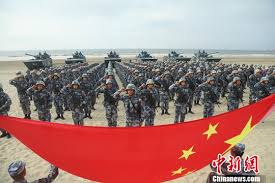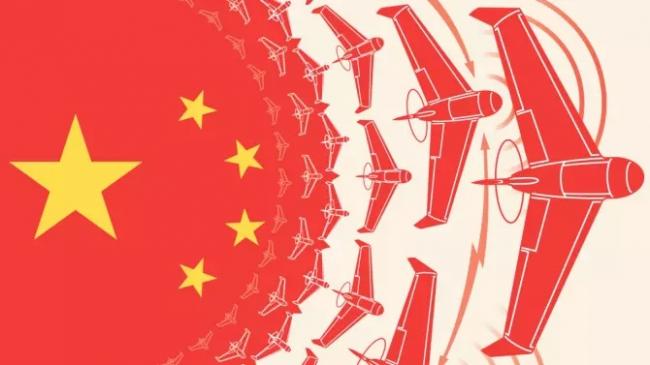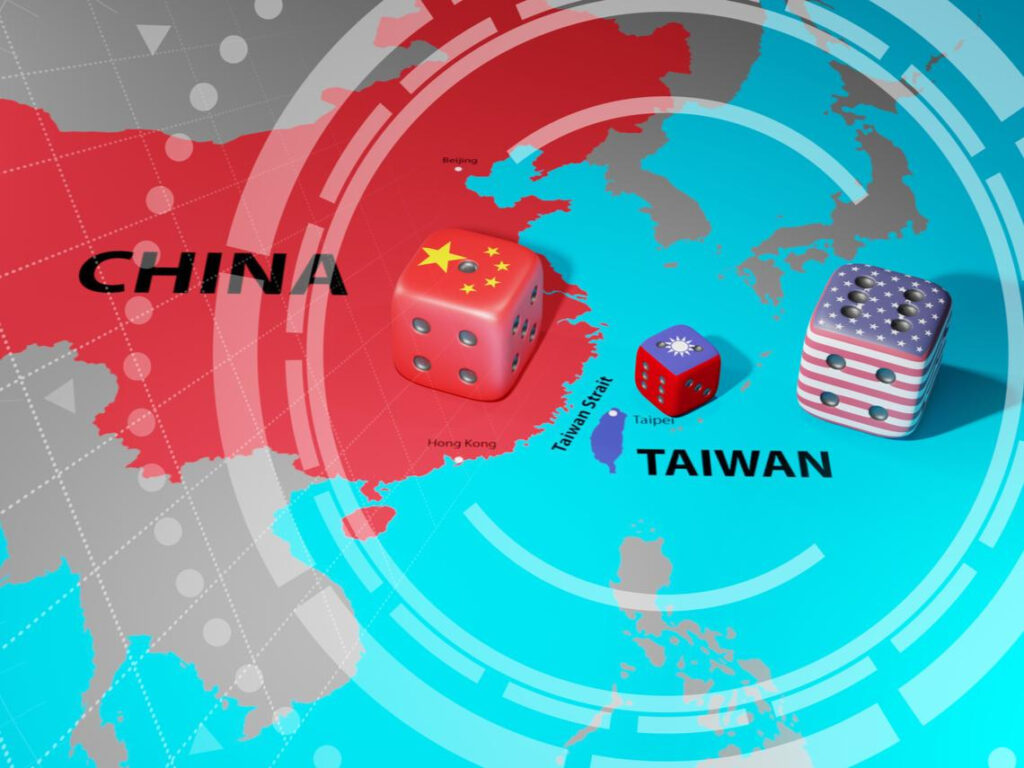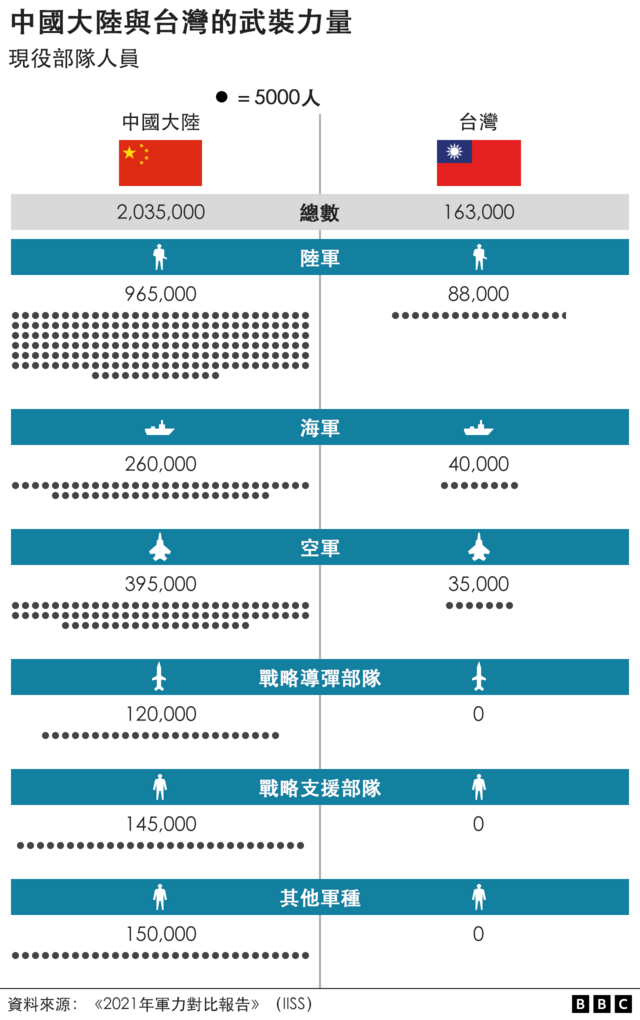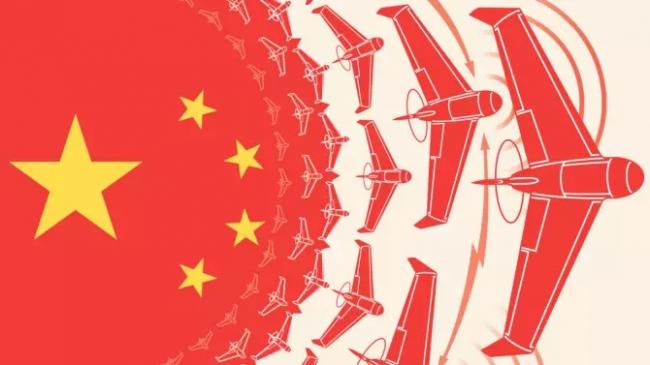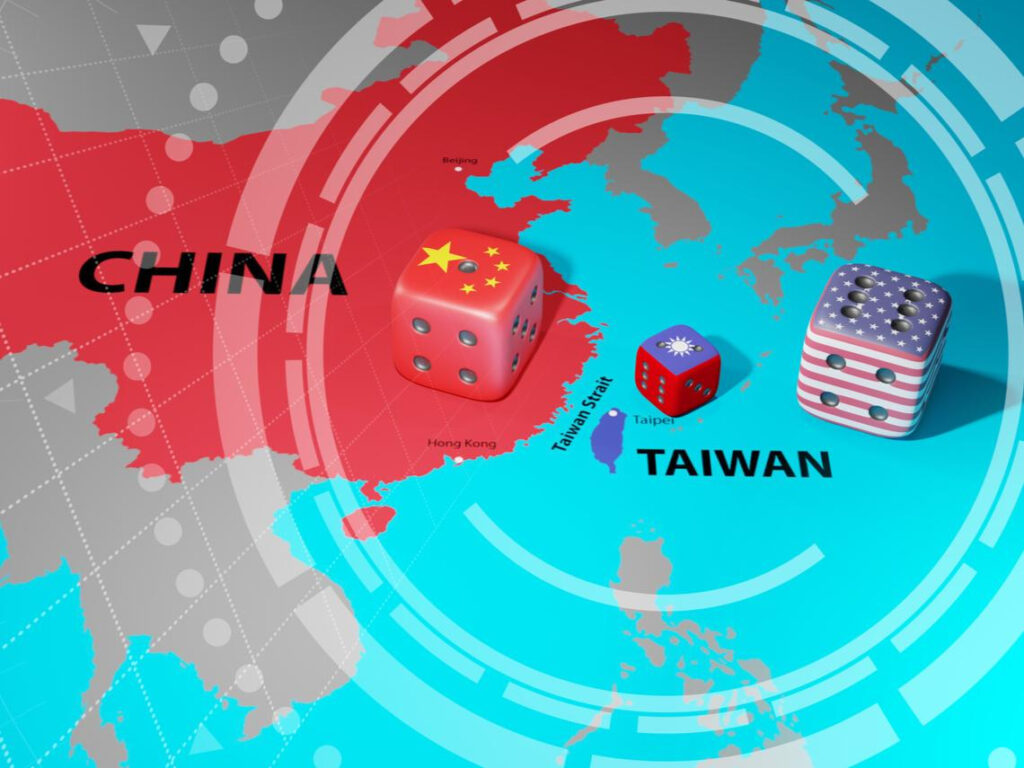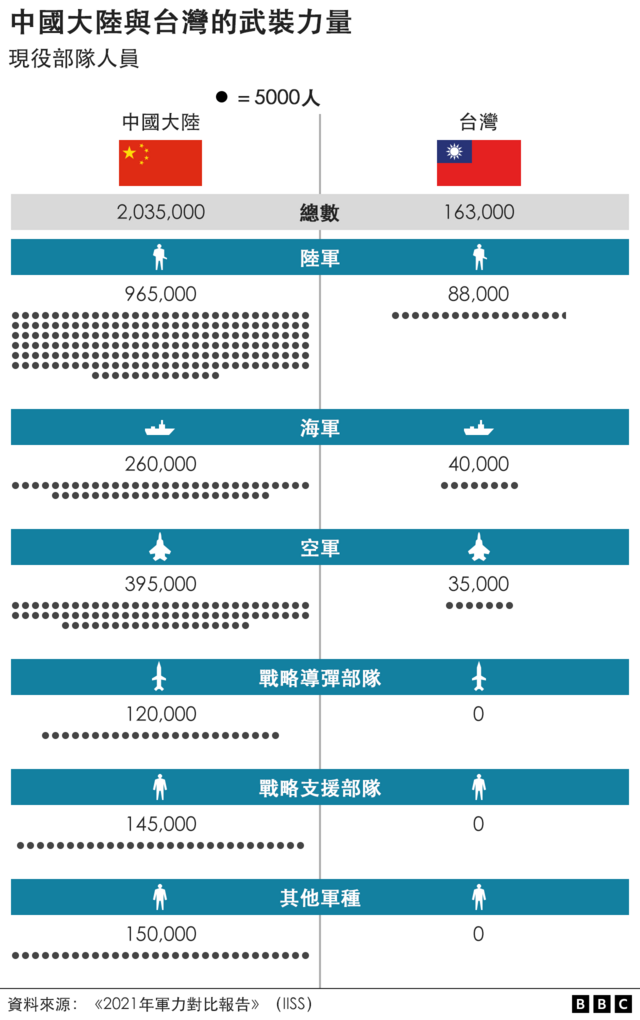中國人民解放軍分析軍隊如何執行戰略戰術戰
現代漢語音譯:
To implement the general principle of “the CMC is in overall control, the theater commands are responsible for combat, and the services are responsible for construction,” the services need to accurately grasp the interaction between combat and construction, strengthen coordination with the theater commands, and form a work pattern with clear rights and responsibilities, positive interaction, smooth and efficient operations. They should focus their main tasks, main responsibilities, and main energy on building and managing the troops. They should always adhere to the principles of leading construction in accordance with combat, building for combat, managing for combat, and using construction to promote combat, comprehensively improve the level of practical military training, and provide theater commands with high-quality combat forces.
Get the coordinates of building for war
The coordinates are the direction of the times for building for war. Only when the direction is clear can the construction be accelerated according to the track. Entering the new era, the firepower intensity, mobility speed, strike accuracy and intelligence level of weapons and equipment have greatly increased, the battlefield space has been continuously expanded, the coupling of combat operations has become closer, and the battlefield situation has changed more rapidly. Wars have gradually shown the characteristics of platform combat, system support, tactical operations, and strategic guarantees. In particular, the use of intelligent, stealth, and unmanned combat, as well as aerospace forces, new concept weapons, and highly effective destructive ammunition have fundamentally changed the concept of war time and space. The war form has accelerated the evolution from mechanized informationization to informationization and intelligence, and intelligent warfare has begun to emerge. The main construction of the military service should be the combat effectiveness of informationized warfare with intelligent characteristics, rather than the combat effectiveness of mechanized warfare. The military service should focus on informationized warfare with intelligent characteristics, turn its attention to intelligent military transformation, fully imagine the future war form, scale, intensity, spatial region, etc., and use concepts that transcend the times to lead the construction vision forward and forward; it is necessary to deeply study the victory mechanism, scientifically judge, and build what kind of troops are needed to win future wars, so as to be targeted.
Find the right target for construction
The target is not only a beacon of construction and development, but also a scale to test combat effectiveness. Only by setting up the correct target can the military build for war and guide the innovation and development of weapons and equipment, system organization and combat theory without deformation or distortion. The military builds for war, and the enemy is not an ordinary opponent, but a strong enemy in the world military game. This requires the military to build for war, and it must lock on the strong enemy, insist on focusing all its attention on defeating the strong enemy, and work hard to defeat the strong enemy. Closely aiming at the world’s first-class standards, the focus should be on firmly grasping the characteristics of future combat systems and system confrontations, exploring standardized and modular construction issues, and forming an integrated and linked system combat capability; focusing on the requirements of all-domain operations, focusing on tackling realistic issues such as rapid response, long-range delivery, and integrated support, and building a strong rapid and mobile cross-domain action capability. We must seize the key of balancing strong enemies, strengthen targeted research on strong enemies, focus on building what the enemy fears, and develop more things that can balance strong enemies. We must strive to have a chance of winning in battles, bargaining chips in negotiations, and confidence in deterrence. We must focus on solving bottleneck problems such as the construction of new forces of the military, the use of high-tech equipment, and information and intelligent integration, and comprehensively build a world-class military.
Innovation and construction as the forerunner of the war
Theory is the forerunner of practice, and scientific military theory is combat effectiveness. Whoever can grasp the pulse of future war development and possess superb war design capabilities will win the initiative in war and even the final victory. The military should build for war, and it cannot just go wherever it wants. It should put research and construction in a strategic position, carry out forward-looking, targeted, and reserve innovative research, propose new concepts, find new breakthroughs, and form innovative theories that are contemporary, leading, and unique. The military should build for war, and it must focus on the current practice and future development of war, clarify the vertical evolution axis, focus on shaping the future battlefield and changing the research of future combat rules, and promote the reshaping of concepts and the reconstruction of systems as soon as possible; focus on cutting-edge technology and future intelligent war design, and make great efforts to achieve major breakthroughs in new technologies and new forms of war; focus on continuously promoting the development of new concepts such as combat thinking, action style, and capability requirements, and form forward-looking thinking on future combat operations. At the same time, the new theories and concepts should be systematized and concretized, and become a “roadmap” for planning and designing the construction of force systems, the development of weapons and equipment, the transformation of military training, and the training of combat talents. It is necessary to form a closed loop from practice to theory and then from theory to practice, allow military theoretical research to draw rich nutrients from practice, allow advanced and mature theoretical results to enter the military decision-making and practical links, and achieve a virtuous interaction between theory and practice.
Build a hard core of construction for war
Science and technology are the most revolutionary force. Scientific and technological innovation has always been a race against time and speed. If you don’t work hard to innovate, you will fall behind and be beaten. If you innovate slowly, you will also fall behind and be beaten. Today, scientific and technological innovation has become the core strategy for many countries and militaries to seek advantages. The military must pay close attention to the leading role of science and technology in building for war. By integrating the most cutting-edge and even imagined future science and technology into the overall construction plan, it will lead the basic direction of construction and development, and actively explore the scientific and technological innovation path of using the future army to fight a future war with the future enemy; it must implement the strategy of strengthening the military with science and technology, demand combat effectiveness from scientific and technological innovation, vigorously cultivate new scientific and technological growth points, and strive to increase the contribution rate of scientific and technological innovation to the development of the combat effectiveness of the military; it must face the world’s scientific and technological frontiers, the main battlefields of the future, and the major needs of combat, accelerate the pace of innovation, and plan and demonstrate that one item must be launched, especially to let disruptive technology run ahead, strive to run faster, and win new advantages. Obviously, talent is the key to building a hard core for war. Talent is the most difficult preparation. Whoever has more high-quality new military talents will be able to gain or gain more winning opportunities on the battlefield in the future. We must accurately grasp the characteristics and laws of modern warfare and the requirements for military transformation and construction, so as to train the talents needed for war and prioritize the talents that are most in short supply, so that the supply side of talent training can be accurately matched with the demand side of future battlefields.
Laying a solid foundation for building for war
Fighting is hard-hitting, while training is practical. The root of “war” lies in “construction”, and the foundation of “construction” lies in “training”. Military training, as the regular and central work of the troops, is not only the basic way to generate and improve combat effectiveness, but also the most direct preparation for military struggle. In the new era, the form of war is accelerating towards informationization and intelligence, the mission and tasks of the army are constantly expanding, the level of informationization and intelligence of weapons and equipment is gradually improving, and the conditions for training support are gradually improving. It is urgent for the services to comprehensively upgrade their combat capabilities from considering the interaction of multiple fields such as the form of war, combat methods, weapons and equipment, and personnel quality, to analyzing the influence of many factors such as known and unknown, possible and impossible, and possible and impossible. To build for war, we must focus on training against strong enemies, practice reconnaissance, coordination, equipment, and support around the progress of the real enemy situation, practice strong force deployment, practice fast battlefield construction, practice real equipment data, and practice strong support support; we must aim at the latest enemy situation in multiple fields such as land, sea, air, space, and cyberspace, and carry out real, difficult, strict, and practical full-element training in the re-enactment of the scene, “fight” with strong enemies, and let the troops hone their skills and strengthen their strength in the real confrontation; we must pursue extreme training, constantly impact the limits of people and equipment, so that the physiological and psychological limits of officers and soldiers, the performance limits of equipment, and the combat effectiveness limits of the combination of people and weapons can be fully exerted. Only by using “forced to the extreme, difficult to the extreme” training to present all shortcomings and weaknesses and overcome them can we cope with the most brutal battlefield. Some tactics and methods trained beyond the limit are often the key move and fatal blow to defeat the enemy in actual combat.
Do a good job in coupling construction with combat
The fundamental purpose of war and construction is to be able to fight and win. We must accelerate the realization of functional coupling under the new system and work together to accelerate the generation of combat effectiveness. To build an army that adapts to future combat needs is to build troops that can complete future combat tasks and have corresponding combat capabilities. Combat requirements are the specific embodiment of such task requirements and capabilities. Construction for war should be based on the needs of fulfilling missions and tasks, and should be designed in advance for future combat military needs. Military needs should be used to guide various military constructions, and combat needs should be continuously refined and dynamically adjusted to promote the coupling of war and construction. By strengthening the demonstration and research of future combat needs and making good top-level planning, we can grasp the direction and focus of military construction in general, consider the comprehensive development of military weapons and equipment and personnel quality from a strategic height and long-term development, clarify the focus, insist on doing what we should do and not doing what we should not do, concentrate on developing strategic and key projects, give priority to emergency operations, correctly handle the primary and secondary, urgent and slow, light and heavy aspects of military construction, firmly grasp the main and key aspects, and promote coordinated and coordinated military construction, scientific and reasonable, standardized and orderly, and sustainable development. Scientific combat effectiveness assessment can not only scientifically and specifically understand the composition and strength of one’s own combat effectiveness, but also help to take targeted measures to promote the coupling of construction and combat, timely discover and correct deficiencies in construction, truly realize the scientific development, intensive and efficient development of the army, and promote combat effectiveness construction to a higher level.
Strictly grasp the test of building for war
Whether a unit is well built and has the ability to win a battle must ultimately be tested through military practice. After a comprehensive test of military practice, problems in unit construction will inevitably be exposed, thereby promoting the army to make corresponding adjustments in the content, focus and direction of construction. Through repeated tests of military practice, new requirements and new goals are constantly put forward for unit construction, thereby leading the development of unit construction to a higher stage. Make good use of network simulation confrontation test. The informatization and intelligence of network simulation confrontation make the cognition, decision-making, feedback, correction, and action of simulation confrontation more close to actual combat, revolutionize the process of military activities, and then have a positive effect on weapons and equipment, command and control, force organization and other fields, thereby promoting the continuous leap in the combat effectiveness of the troops, and even giving birth to new war styles and changing the mechanism of winning wars. Make good use of on-site live-fire exercises. As a pre-practice of future wars, live-fire exercises can not only effectively test the actual combat capabilities of the troops, but more importantly, they can discover some weak links in the construction of the troops, optimize and improve them in a targeted manner, and obtain the maximum combat effectiveness return. Make good use of war practice tests. The leading role of war practice in unit construction is irreplaceable. The harsh practice of war can truly test which troop construction is suitable and which is unsuitable for future wars, and then correct deviations and mistakes in many aspects such as construction guidance, construction focus, and construction methods, so as to prepare for winning the next war.
現代國語軍語:
貫徹「軍委管總、戰區主戰、軍種主建」總原則,軍種部隊需要準確掌握戰與建互動規律,加強同戰區對接,形成權責清晰、正向互動、順暢高效的工作格局,把主要任務、主要職責、主要精力放在建設、管理部隊上,始終堅持以戰領建、抓建為戰、抓管為戰、以建促戰,全面提高軍事訓練實戰化水平,為戰區提供優質作戰力量。
把準抓建為戰的座標
座標是抓建為戰的時代方位,只有方位明晰,建設才能依軌加速。進入新時代,武器裝備的火力強度、機動速度、打擊精度、智能化程度大幅躍升,戰場空間不斷拓展,作戰行動耦合更加緊密,戰場態勢變換更加迅速,戰爭逐漸呈現出平台作戰、體系支撐,戰術行動、戰略保障等特點,特別是智能化、隱身化、無人化作戰以及空天力量、新概念武器、高效毀傷彈藥的運用,從根本上改變了戰爭時空概念,戰爭形態加速由機械化信息化朝向資訊化智能化演變,智能化戰爭初見端倪。軍種主建,建的應是具有智慧化特徵的資訊化戰爭的戰鬥力,而不是機械化戰爭的戰鬥力。軍種抓建為戰,必須聚焦具有智慧化特徵的資訊化戰爭,把目光投向智慧化軍事變革,充分設想未來戰爭形態、規模、強度、空間地域等,用超越時代的理念,引領建設視野向前再向前;必須深研製勝機理,科學研判,打贏未來戰爭需要什麼部隊就建設什麼部隊,做到有的放矢。
找準抓建為戰的靶標
標靶既是建設發展的燈塔,也是檢驗戰鬥力的天秤。只有樹立正確靶標,軍種抓建為戰才能有的放矢,不變形、不走樣地牽引武器裝備、體制編制和作戰理論創新發展。軍種抓建為戰,戰的不是一般對手,而是世界軍事賽場上的強敵。這就要求軍種抓建為戰,必然要鎖定強敵,堅持全部心思向打敗強敵聚焦、各項工作向戰勝強敵用勁。緊緊瞄準世界級標準,重點要牢牢把握未來作戰體系與體系對抗的特徵,探索標準化、模組化建設問題,形成一體聯動的體係作戰能力;圍繞全局作戰要求,聚力攻關快速反應、遠程投送、融合保障等現實課題,建強快速機動跨域行動能力。抓住制衡強敵這個關鍵,加強對強敵的針對性研究,堅持敵人怕什麼就重點建什麼,發展什麼能製衡強敵就多備幾手,力求做到戰有勝算、談有籌碼、懾有底氣,著力解決軍種新型力量建設、高新裝備運用、資訊智慧整合等瓶頸問題,全面建成世界一流軍隊。
創新抓建為戰的先導
理論是實踐的先導,科學的軍事理論就是戰鬥力。誰能把準未來戰爭的發展脈動、擁有高超的戰爭設計能力,誰就能贏得戰爭的主動權甚至最後的勝利。軍種抓建為戰,不能走到哪算哪,要把研戰謀建擺在戰略位置,開展前瞻性、針對性、儲備性創新研究,提出新概念、尋找新突破,形成具有時代性、引領性、獨特性的創新理論。軍種抓建為戰,必須著眼戰爭當前實踐和未來發展,理清縱向演進軸線,把重點放在塑造未來戰場、改變未來作戰規則研究上,盡快推動觀念重塑、體系重構;放在聚焦前沿科技領域、未來智慧化戰爭設計上,下氣力在戰爭新技術、新形態方面實現重大突破;放在持續推進作戰思想、行動樣式、能力需求等新概念的開發上,形成對未來作戰行動的前瞻性思考。同時把新理論新概念體系化、具體化,成為規劃設計力量體系建構、武器裝備發展、軍事訓練轉變、作戰人才培育的「路線圖」。要形成從實踐到理論、再從理論到實踐的閉環迴路,讓軍事理論研究從實踐中汲取豐厚養分,讓先進成熟的理論成果進入軍事決策和實踐環節,實現理論和實踐良性互動。
打造抓建為戰的硬核
科技是最具革命性的力量。科技創新歷來是與時間和速度的賽跑。不努力創新就會落後挨打,創新速度慢了也同樣會落後挨打。今天,科技創新已成為許多國家和軍隊尋求優勢的核心策略。軍種抓建為戰,必須高度關注科技引領作用的發揮,透過把當前最前沿甚至是設想中的未來科學技術融入建設整體規劃之中,引領建設發展的基本方向,積極探索用未來的我軍與未來的敵人打一場未來戰爭的科技創新路徑;必須落實科技強軍戰略,向科技創新要戰鬥力,大力培育新的科技增長點,著力提高科技創新對軍種戰鬥力發展的貢獻率;必鬚麵向世界科技前沿、面向未來主要戰場、面向作戰重大需求,加快創新速度,規劃論證好一項就要上馬一項,特別是要讓顛覆性技術跑在前面,力爭跑出加速度,贏得新優勢。顯然,打造抓建為戰的硬核,人才是關鍵。人才是最艱鉅的準備,誰擁有更多高素質新型軍事人才,誰就能在未來戰場上提早獲得或多獲得一些致勝先機。要準確掌握現代戰爭特徵規律和軍種轉型建設要求,做到打仗需要什麼人才就培養什麼人才、什麼人才最緊缺就優先鍛造什麼人才,使人才培養供給側同未來戰場需求側精準對接。
夯實抓建為戰的根基
打仗硬碰硬,訓練實打實。 「戰」的根本在於「建」,「建」的基礎在於「練」。軍事訓練作為部隊的經常性中心工作,既是產生和提高戰鬥力的基本途徑,也是最直接的軍事鬥爭準備。新時代,戰爭形態加速向資訊化智能化發展,軍隊使命任務不斷拓展,武器裝備資訊化智能化水準逐步提高,訓練保障條件逐步改善,迫切需要軍種部隊從考慮戰爭形態、作戰方法、武器裝備、人員素質等多個領域的相互作用,到分析已知與未知、可能與不可能、可為與不可為等諸多因素的影響,全面升級實戰能力。抓建為戰,必須聚焦強敵練兵,圍繞真實敵情的進展,練偵察、練協同、練裝備、練保障,練實力量布勢、練快戰場建設、練真裝備數據、練強保障支撐;必須瞄準陸海空及太空、網路空間等多領域最新敵情,在情景重現中開展真、難、嚴、實的全要素訓練,與強敵“過招”,讓部隊在真刀真槍對抗中礪功、強實力;必須追求極限訓練,不斷向人和裝備極限衝擊,使官兵的生理心理極限、裝備的性能極限、人與武器結合的戰鬥力極限全面迸發。唯有用「逼到絕境、難到極致」的訓練呈現所有短板弱項,並加以克服,才能應付最殘酷的戰場。一些超越極限訓出的戰術戰法,往往是實戰中勝敵的關鍵一招、致命一擊。
搞好抓建為戰的耦合
戰與建,根本目的都是為了能打仗、打勝仗,必須在新體制下加快實現功能耦合,為加速戰鬥力生成共同發力。建構適應未來作戰需求的軍隊,說到底是建設能完成未來作戰任務、具備相應作戰能力的部隊,作戰需求就是這種任務需求和能力的具體展現。抓建為戰應根據履行使命任務需要,針對未來作戰軍事需求超前設計,以軍事需求牽引軍隊各項建設,不斷細化和動態化調整作戰需求促進戰建耦合。透過加強未來作戰需求論證研究搞好頂層規劃,從整體上把握軍隊建設的方向和重點,從戰略高度和長遠發展考慮軍隊武器裝備、人員素質的全面發展,明確重點,堅持有所為有所不為,集中力量發展戰略性、關鍵性項目,優先保障應急作戰,正確處理軍隊建設的主與次、急與緩、輕與重,緊緊抓住主要的、關鍵的,推動軍隊建設協調配套,科學合理,規範有序,持續發展。科學的戰鬥力評估不僅能夠科學具體地認識己方戰鬥力的組成及其強弱,還有利於採取針對性措施促進抓建為戰的耦合,及時發現並糾正建設中的不足,真正實現軍隊建設的科學發展、集約高效,促進戰鬥力建設上台階。
嚴格抓建為戰的檢驗
一支部隊建設得好不好,是不是已經具備打勝仗的能力,最終還是要透過軍事實踐來檢驗。經過軍事實踐的全面檢驗,必然暴露部隊建設上存在的問題,從而推動軍隊在建設內容、重點、方向上做出相應的調整。透過這樣一次次軍事實踐的反覆檢驗,不斷地給部隊建設提出新要求新目標,由此引領部隊建設向著更高的階段發展。用好網路模擬對抗檢驗。網路模擬對抗資訊智慧化,使得模擬對抗的認知、決策、回饋、修正、行動等更趨於實戰,革命性地改造軍事活動流程,進而對武器裝備、指揮控制、力量編組等多個領域產生正面作用,由此促進部隊戰鬥力不斷躍升,甚至催生新的戰爭樣式、改變戰爭制勝機制。用好現地實兵演習檢驗。作為未來戰爭的預實踐,實兵演習不僅能有效檢驗部隊的實戰能力,更為重要的,是能發現部隊建設中存在的一些薄弱環節,有針對性地加以優化改進,獲得最大限度的戰鬥力回報。用好戰爭實踐檢驗。戰爭實踐對部隊建設的引領作用不可取代。嚴酷的戰爭實踐,可以真正檢驗部隊建設哪些適合、哪些不適合未來戰爭,進而修正在建設指導、建設重點、建設方法等諸多方面的偏差和失誤,為打贏下一場戰爭做好準備。
中國軍事資源:http://www.mod.gov.cn/gfbw/jmsd/48713888.html
資料來源:解放軍報 作者:王雪平 許炎 朱曉萌 責任編輯:
喬楠楠 2020-09-17 08:38:16




